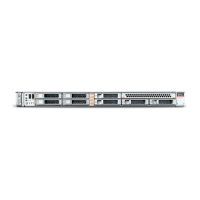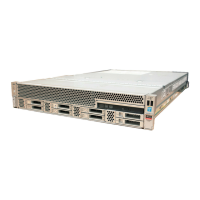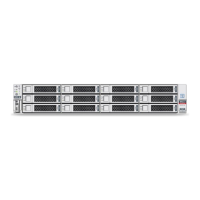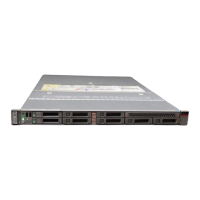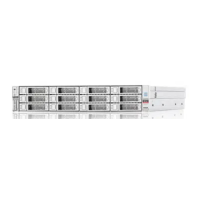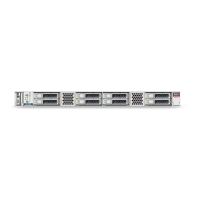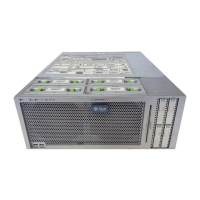Assign Serial Port Output Using the Web Interface
Troubleshooting and Diagnostics 43
To log in, open a web browser and direct it using the IP address of the server SP. Log in as root
or a user with administrator privileges. Refer to “Accessing Oracle ILOM” in the Oracle X6
Series Servers Administration Guide.
The Summary Information screen appears.
2.
In the Oracle ILOM web interface, select ILOM Administration --> Connectivity
from the navigation menu on the left side of the screen.
3.
Select the Serial Port tab.
The Serial Port Settings page appears.
Note - The serial port sharing setting by default is Service Processor.
4.
In the Serial Port Settings page, select Host Server as the serial port owner.
5.
Click Save for the changes to take effect.
6.
Connect a serial host to the server.
Server Operating System Names for the NVMe
Storage Drives
If the optional NVMe storage drives are installed in the server's front panel, they are labeled
NVMe0, NVMe1, NVMe2, and NVMe3. However, the server operating systems assign these
storage drives different names. For the corresponding names assigned by the operating systems,
see the following table.
TABLE 7
Operating System NVMe Storage Drive Nomenclature
Storage Drive Labels Names Assigned by the Server Operating Systems
NVMe0 PCI-Express Slot 10
NVMe1 PCI-Express Slot 11
NVMe2 PCI-Express Slot 12
NVMe3 PCI-Express Slot 13
Ethernet Port Boot Order and Device Naming
This section contains information about the boot order and device naming for the four
10-Gigabit Ethernet ports on the rear panel of the server (see “Rear Panel Connector
Locations” on page 40). From right to left, the ports are numbered NET 0 to NET 3.

